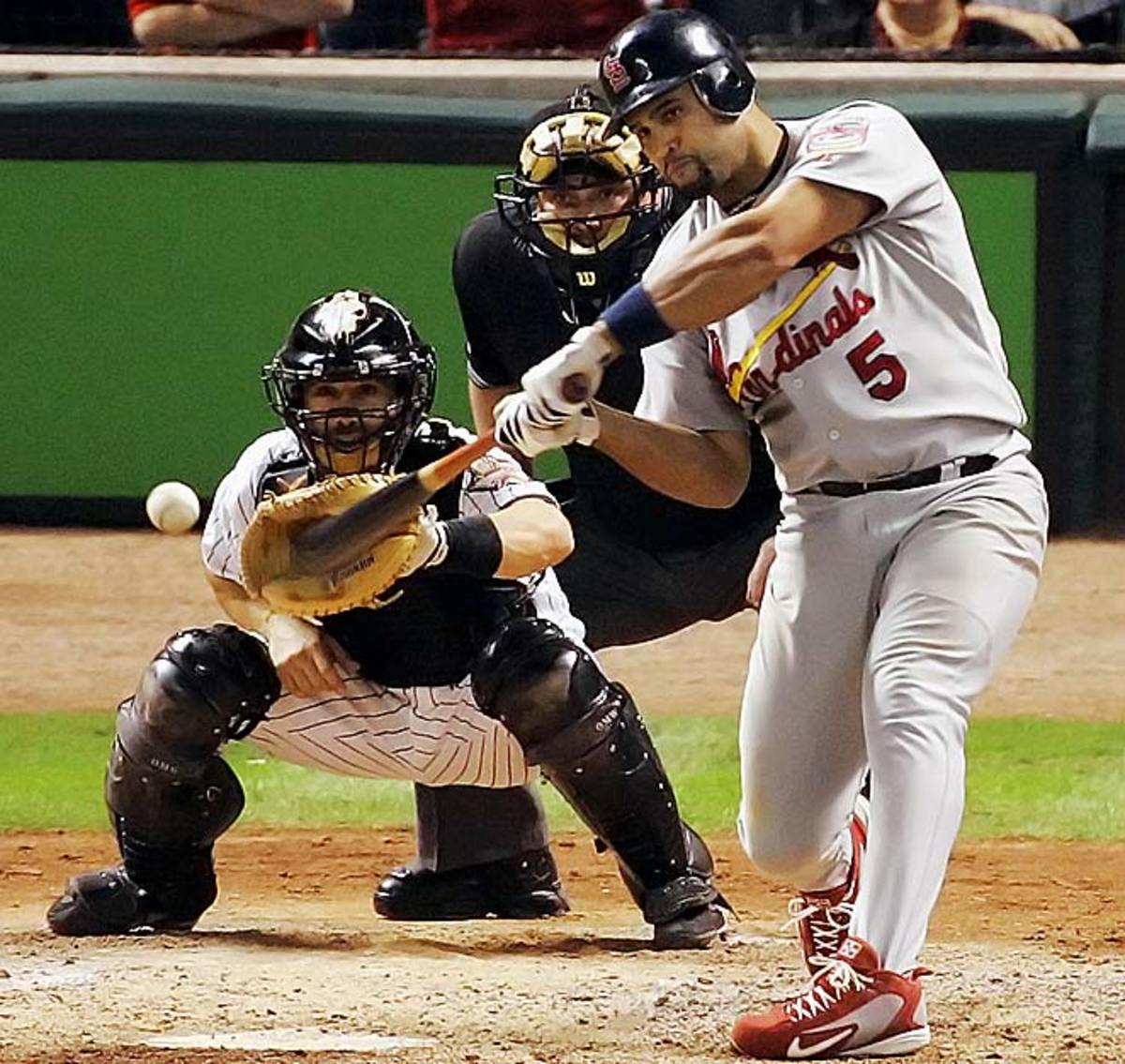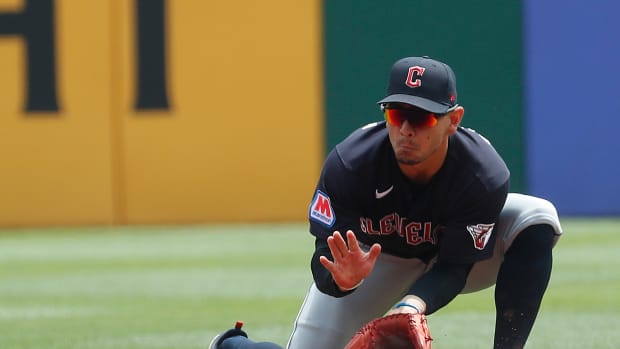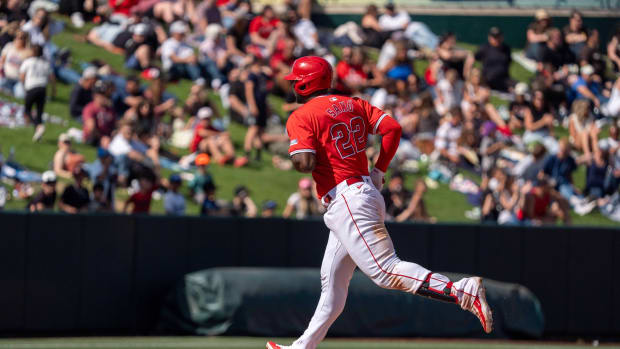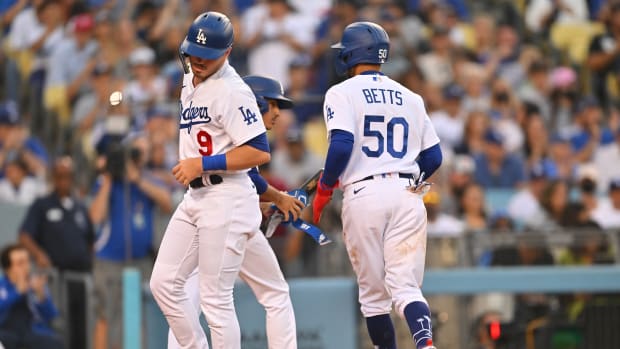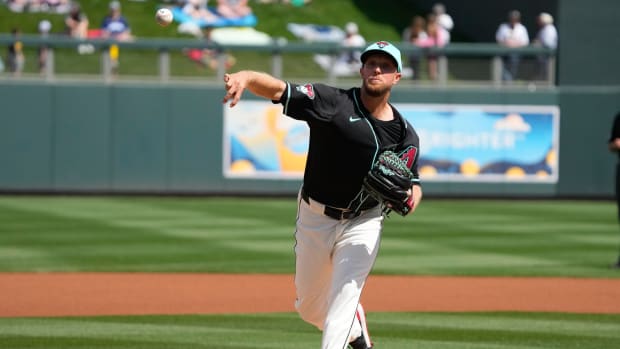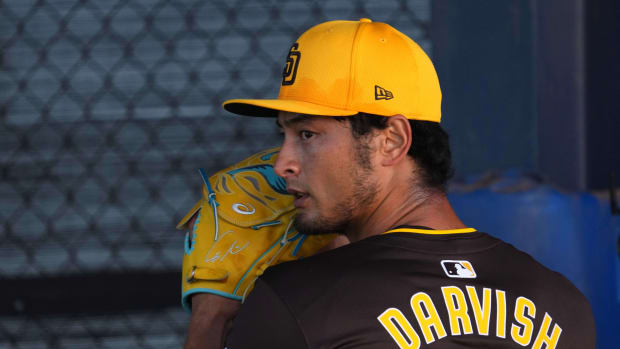The 10 most powerful home runs in baseball history
Perhaps nothing in sports so perfectly encapsulates the notion of power as the home run. It is as old as the game itself, but it wasn't until the arrival of Babe Ruth that the longball took its place in the American consciousness.
Now, almost 100 years later, the home run remains as much a symbol of power as it did then. The lineage of iconic sluggers that began with Ruth continued through Ted Williams, Mickey Mantle, Reggie Jackson and Albert Pujols, all of whom make this ranking of the 10 most powerful home runs in baseball history.
These may not be the longest home runs ever hit, as such data is incomplete and can not always be verified, nor are they necessarily the most impactful. But they combine plenty of both and ensure that, like the men who hit them, they will never be forgotten.
10. Roberto Clemente, May 31, 1964
Hall of Famer and humanitarian Roberto Clemente is remembered as one of baseball's most significant figures, but, with 240 home runs in 18 seasons, it wasn't for his prowess as a power hitter. Still, he possessed plenty of pop. That was never more true than on a spring day at Forbes Field in Pittsburgh, when Clemente took Dodgers' ace Sandy Koufax deep, with the ball smashing off a light tower in deep left-centerfield. ESPN's Home Run Tracker later estimated it to have traveled 485 feet, surely one of the longest home runs of Clemente's career and the among the longest ever given up by the great Koufax.
9. Willie Stargell, June 25, 1971
Willie Stargell was no stranger to momentous home runs. He hit two balls out of Dodger Stadium and did his share of damage at both Forbes Field and Three Rivers Stadium in Pittsburgh. But it was this shot in 1971 at Philadelphia's Veterans Stadium that has outlived the man who hit it and the ballpark it was hit in. That June, Stargell, who died in 2001, launched a pitch from fellow Hall of Famer -- and future U.S. Senator -- Jim Bunning into Section 601 at the Vet. It was commemorated with a plaque known as Stargell's Star until the building was imploded after the Phillies departed for Citizens Bank Park. In 2003, former Philadelphia shortstop Larry Bowa told MLB.com, "It would take me three swings to get one up there -- from second base."
8. Mark McGwire, May 16, 1998
Before anyone had heard of androstenedione -- and certainly before anyone cared -- Mark McGwire put on a summer-long show of strength in 1998 that was as amazing as anything seen before or since. En route to a record-setting 70-home run season, McGwire punctured the skies above ballparks across America, and sometimes, even punctured the ballparks themselves. On May 16, he launched a towering homer off Florida's Livan Hernandez that hit off a sign in leftfield. The Cardinals commemorated the blast by putting a Band-Aid over the spot where the ball struck.
7. Jose Canseco, Oct. 7, 1989
Like his former Bash Brother McGwire, Jose Canseco's power was a source of awe long before it was a source of derision. During Game 4 of the 1989 American League Championship Series, though Canseco hit a home run that encapsulated eventual World Series champion Oakland's dominance of the sport, crushing a ball into the fourth deck in leftfield. According to the Los Angeles Times, Canseco wasn't too impressed, saying, "I didn't really hit it that well." Everyone else, though was suitably awed. A's infielder Billy Beane -- yes, that one -- called it "a home run of biblical proportions." Amen.
6. Josh Hamilton, July 14, 2008
Josh Hamilton made no secret of the fact that he entered the 2008 Home Run Derby trying to do something no one had ever done: hit a fair ball out of Yankee Stadium. He had to settle for doing something else no one had ever done: authoring a Home Run Derby performance that would never be forgotten. Hamilton came pretty close to his first goal, too, routinely depositing balls in the far reaches of the upper deck or in -- and sometimes, off -- the back of the rightfield bleachers at the House That Ruth Built. All told, Hamilton hit a record 28 home runs in the first round, some (like this one) that measured over 500 feet in a prodigious display of power that served as the last great moment in the final season for baseball's most famous ballpark.
5. Reggie Jackson, July 13, 1971
Watch the clip of the home run that struck a light tower atop the right-centerfield roof at Tiger Stadium and there's some disagreement between announcers Curt Gowdy and Tony Kubek of NBC as to how many people had ever hit a ball that far in that ballpark. What isn't in dispute is that this is the home run most associated with the stadium, which played host to 88 seasons of baseball. Jackson, of course, would go on to hit more significant homers en route to earning the label Mr. October, but perhaps none revealed his true strength more than his moonshot at the Midsummer Classic.
4. Albert Pujols, Oct. 17, 2005
It's likely that most people will forget, if they haven't already, that the St. Louis Cardinals lost the 2005 National League Championship Series to the Houston Astros. What will never be forgotten, though, is the titanic home run struck by Albert Pujols that temporarily kept the Cardinals alive. With two out and two on in Game 5 and Houston holding a 4-2 lead, Brad Lidge threw a fastball that he hoped would result in a pennant-clinching out. Instead, Pujols crushed the ball almost out of Minute Maid Park entirely. The blast gave St. Louis a 5-4 lead it would preserve and Pujols an iconic moment in a Hall of Fame career.
3. Ted Williams, June 9, 1946
Ted Williams' most famous home run was his last, No. 521, hit in his final at-bat in the majors at Fenway Park in 1960. His most impressive, though, may have been one he hit 14 years earlier that earned both a name and a uique and permanent place in America's oldest ballpark. Williams teed off on the Tigers' Fred Hutchinson and launched the ball into the rightfield bleachers where it struck a fan named Joseph A. Boucher in Seat 21, Row 37, Section 42. It's official distance is 502 feet, though later estimates have it going about 25 feet farther. The seat Boucher was sitting in has since been painted red to memorialize the longest home run in the 101-year history of Fenway. As for Boucher, he asked the Boston Globe a question that day that pitchers must have asked themselves anytime they had to face Teddy Ballgame: "How far away must one sit to be safe in this park?"
2. Babe Ruth, October 1, 1932
Almost 80 years after he last played and 65 years after his death, Babe Ruth remains immortalized thanks mostly to his legendary home runs that changed -- and maybe even saved -- the sport. Of Ruth's 714 regular season and 15 World Series homers, none is as famous or as controversial as the second one he hit during Game 3 of the 1932 World Series. With the game tied 4-4 and the Cubs' Charlie Root on the mound in the fifth inning, Ruth is said to have stepped out of the batter's box and, in his words, "I said I'm gonna hit the next pitched ball right past the flagpole." Ruth did just that, hitting what would be remembered for yeas as the longest home run in Wrigley Field history. No one will ever know for sure whether Ruth's Called Shot is more fact than fiction. What is certain is that, much like Ruth himself, it will live on for as long as the game is played.
1. Mickey Mantle, May 22, 1963 and April 17, 1953
Mickey Mantle literally invented the tape-measure home run with his historic homer against the Washington Senators at Griffith Stadium in 1953, when the 21-year-old Commerce Comet hit a blast that streaked across the sky, went out of the ballpark and came to rest in a yard across the street. The Yankees' public relations man, Red Patterson, took a tape measure and estimated the ball went 565 feet. A decade later, Mantle showed he was as strong as ever when he came within inches of becoming the first person to hit a fair ball out of the original Yankee Stadium. Some who saw it swear it was still rising when it struck the facade in rightfield, a blow later estimated at well over 500 feet Though those distances have often been disputed, what has never been questioned is Mantle's place in the pantheon of the game's most iconic sluggers.






























